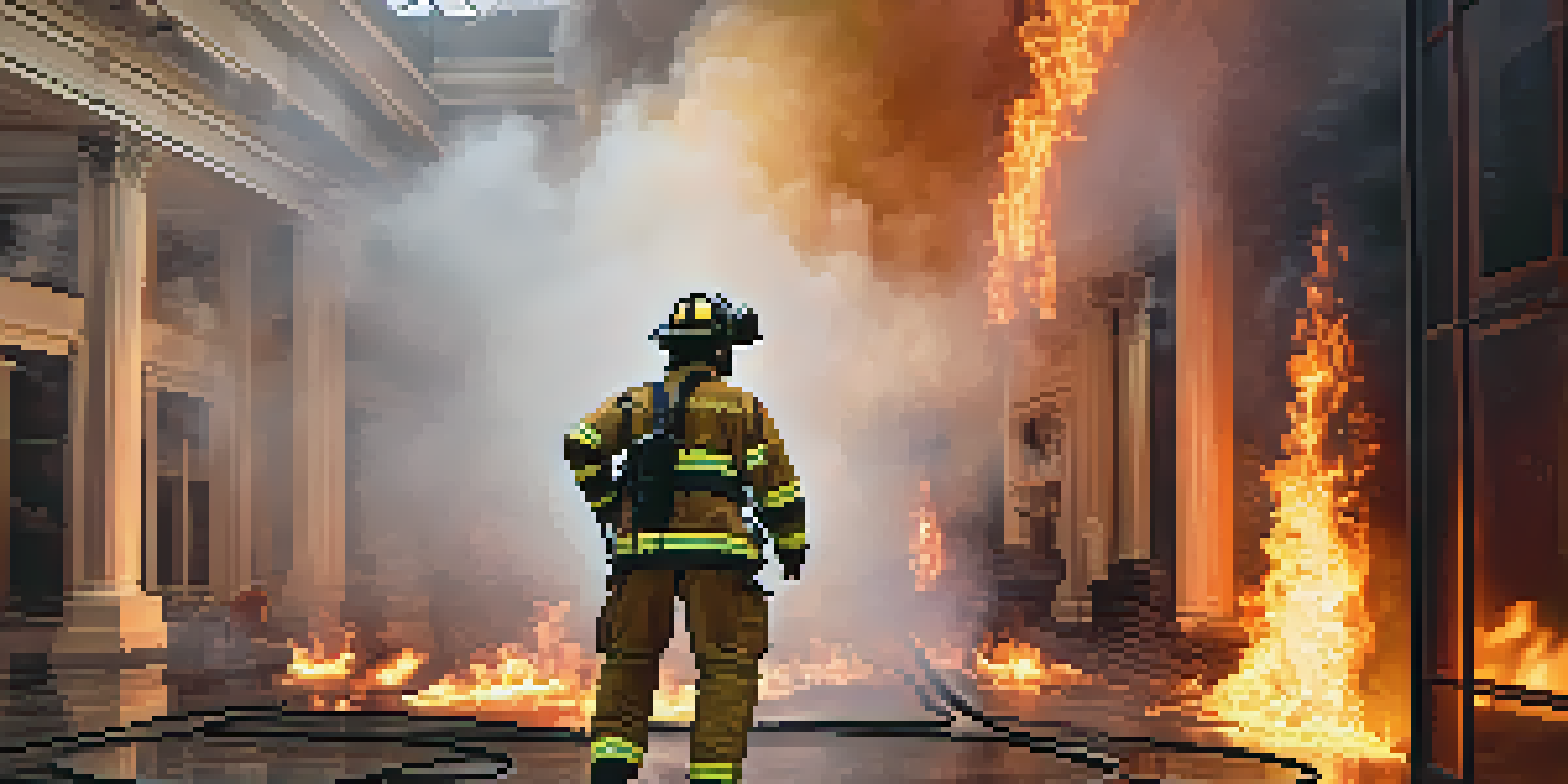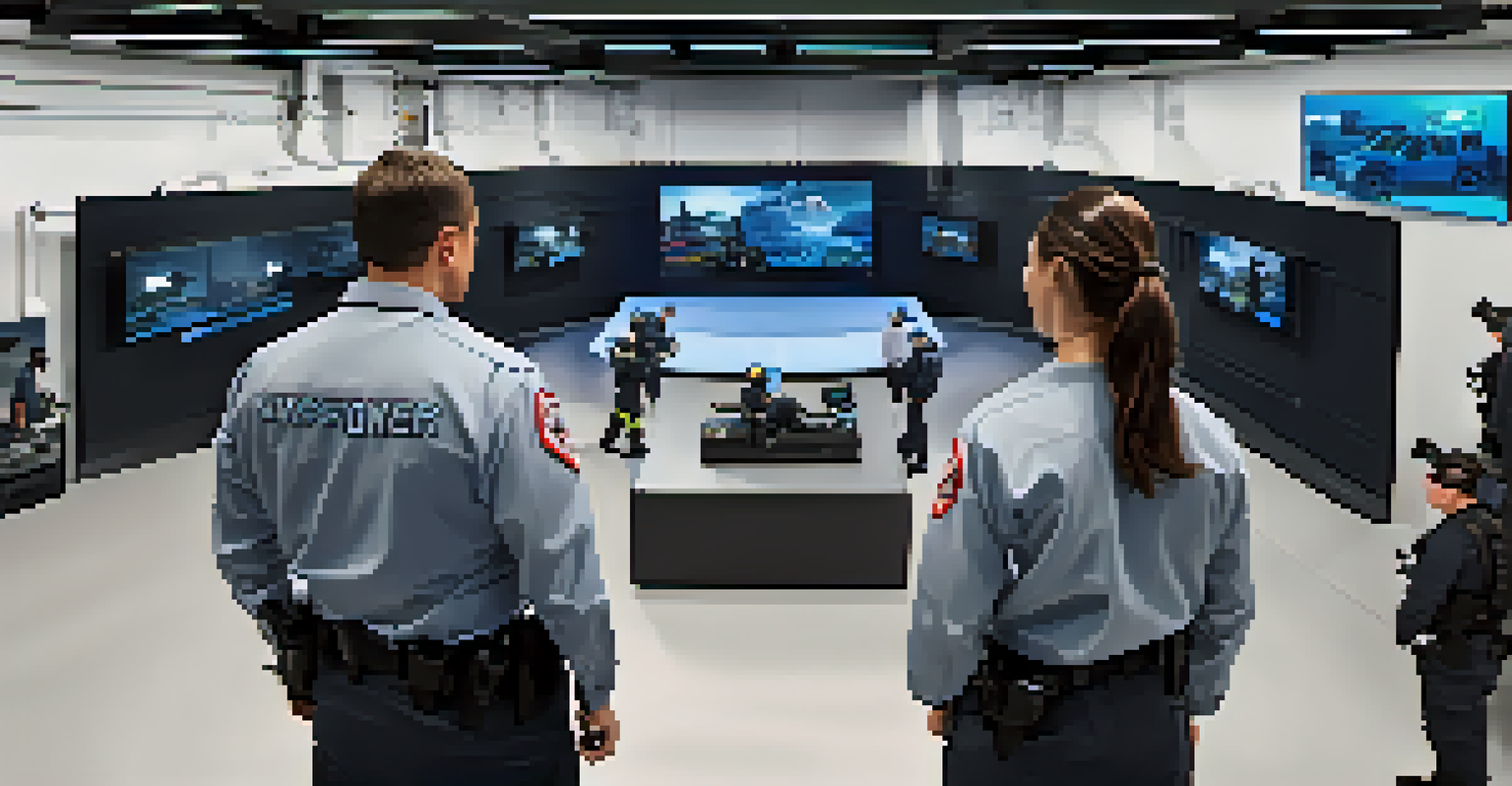Virtual Reality for First Responders: Training for Crisis Situations

Understanding the Role of Virtual Reality in Training
Virtual reality (VR) is revolutionizing how first responders train for crisis situations. Unlike traditional methods, VR immerses trainees in lifelike scenarios that replicate high-stress environments. This technology allows responders to practice their skills in a controlled setting, ultimately improving their decision-making under pressure.
Virtual reality is not just a tool for entertainment; it has the potential to transform training and education in various fields, especially where real-life situations can be dangerous.
Imagine a firefighter navigating a burning building or a paramedic responding to a chaotic accident scene. VR provides a safe space for them to experience these situations without real-world consequences. This experiential learning enhances retention and prepares them for the unpredictability of actual emergencies.
Moreover, VR training can be tailored to specific incidents, whether it's natural disasters, active shooter situations, or medical emergencies. By simulating various scenarios, first responders can build a diverse skill set that prepares them for whatever they might face in the field.
The Benefits of VR Training for First Responders
One of the standout benefits of VR training is its ability to create a realistic learning environment. Trainees can experience the sights, sounds, and even the stress of a real emergency, which enhances their preparedness. This immersive experience is crucial for building muscle memory and improving response times.

Additionally, VR training can be repeated as often as needed, allowing responders to refine their skills continuously. Unlike live training exercises, which may require resources and personnel, VR can be conducted at any time and location. This flexibility is particularly beneficial for busy first responders who may have limited training hours.
VR Enhances Realistic Training
Virtual reality immerses first responders in lifelike scenarios, improving their preparedness for real emergencies.
Furthermore, the data collected during VR training can provide valuable insights into a responder's performance. Instructors can analyze actions taken during scenarios, offering targeted feedback that helps individuals improve their techniques and strategies.
How VR Simulations Mimic Real-Life Scenarios
VR simulations are designed to closely mimic real-life scenarios that first responders encounter. By using advanced graphics and sound design, these simulations create an engaging experience that feels authentic. The lifelike environments encourage trainees to engage fully, enhancing their learning.
In an emergency, every second counts. Training first responders with realistic simulations can make all the difference when lives are on the line.
For instance, a police officer might practice de-escalation techniques during a simulated domestic disturbance. The virtual environment can include various factors, such as bystanders or changing dynamics, which require quick thinking and adaptability. This realistic practice helps build confidence and competence in critical situations.
Moreover, VR can introduce unpredictable elements, such as equipment malfunctions or unexpected civilian behavior. These surprises force responders to think on their feet and adapt their training, preparing them for the unpredictable nature of real-life emergencies.
Cost-Effectiveness of VR Training Solutions
Investing in VR training can be cost-effective compared to traditional training methods. While the initial setup costs for VR equipment may be higher, the long-term savings are significant. VR reduces the need for physical training spaces and materials, which can be expensive and logistically challenging.
Moreover, because VR training can be conducted anywhere, it eliminates travel and accommodation costs often associated with off-site training programs. First responders can train in their own communities, ensuring that they are prepared for local challenges.
Cost-Effective Training Solution
VR training reduces costs associated with traditional methods by eliminating the need for physical spaces and travel.
Additionally, VR technology can be updated and expanded without the need for extensive re-training resources. New scenarios can be created and implemented quickly, allowing agencies to keep their training relevant and effective.
Enhancing Teamwork and Communication Skills
Another vital aspect of VR training is its ability to enhance teamwork and communication among first responders. Many emergencies require coordinated efforts among different agencies, and VR can simulate these dynamics effectively. Trainees learn how to communicate clearly under pressure and work as a cohesive unit.
For example, a simulation may require firefighters, police officers, and paramedics to collaborate during a multi-agency response to a natural disaster. This experience fosters an understanding of each role's importance and promotes trust and camaraderie among team members.
Additionally, VR can provide feedback on communication effectiveness, allowing teams to refine their strategies. These insights help ensure that, when real emergencies arise, responders can work together seamlessly, improving overall outcomes.
Addressing the Challenges of VR Training Adoption
While the advantages of VR training are clear, there are challenges to its adoption in the first responder community. Budget constraints can hinder agencies from investing in this technology, especially smaller departments with limited resources. Overcoming these financial barriers is critical for wider implementation.
Another challenge lies in the learning curve associated with new technology. Some first responders may initially be resistant to adopting VR, preferring traditional training methods they are more comfortable with. Ongoing education and demonstrations can help ease this transition and showcase the benefits of VR training.
Boosts Teamwork and Communication
VR simulations foster collaboration among first responders, enhancing their teamwork and communication skills under pressure.
Moreover, ensuring that VR scenarios are realistic and relevant is crucial. Agencies must work closely with VR developers to create content that accurately reflects the situations responders will face. This collaboration is key to ensuring that the training is effective and beneficial.
The Future of VR Training for First Responders
As technology continues to advance, the future of VR training for first responders looks promising. Innovations in VR hardware and software are making training experiences more immersive and effective than ever. Upcoming developments may include enhanced haptics and artificial intelligence integration, further improving realism.
Additionally, as more agencies recognize the benefits of VR training, we can expect broader adoption across the country. This shift could lead to standardized training protocols that enhance preparedness and response capabilities nationwide. The goal is to ensure that all first responders are equipped with the latest skills and knowledge.

Ultimately, the combination of VR training with traditional methods could create a comprehensive training program that meets the diverse needs of first responders. By embracing new technologies, we can ensure our heroes are ready to handle crises with confidence and competence.